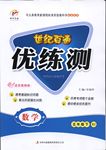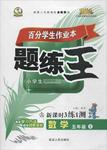题目内容
Art is a product of human activity, made with the intention of stimulating(刺激) human senses as well as human mind or spirit. Thus art is an action, an object, or a collection of ac?tions and objects created with the intention of expressing emotions or ideas. Beyond this descrip?tion,there is no general agreed-upon definition of art,since defining the boundaries of art is subjective, but the drive for art is often called human creativity.
An artwork is normally recognized in quality by the amount of stimulation it brings about,the influence it has on people, the number of people that can relate to it,and so on. All come to the "degree of art". Most artworks that are widely considered to be "masterpieces" possess these features.
Something is not generally considered art when it has a different primary purpose. Howev?er,some contemporary art challenges this idea.
As such,something can be considered art in general,or as an element of some object. For example,a painting may be a pure art,while a chair,though designed to be sat in,may include artistic elements. Art that has less functional value or intention may be referred to as fine art,while objects of artistic merit(价值) that serve a functional purpose may be referred to as craft-work(工艺 品) .
In his article " Modernist Painting",Clement Greenberg defined modern art as " the use of characteristic methods of a discipline(学科) to criticize the discipline itself".
Though only originally intended as a way of understanding a specific set of artworks,this definition of modern art underlies most of the ideas of art within the various art movements of the twentieth century and early twenty-first century.
( ) 1. This text is mainly about .
A.the definition of art
B.the history of art
C.craft and art
D.what fine art is
( ) 2. What do you know about art from the first paragraph?
A.Many artworks are created to influence human behaviour.
B.Human senses can be more easily stimulated by artworks.
C.Many artists fail to express their emotions or ideas through their artworks.
D.It's difficult to reach an agreed-upon definition of the boundaries of art.
( ) 3. What does the fourth paragraph mean?
A.Generally speaking, art can also be considered as craft.
B.The difference between art and craft lies in its primary purpose.
C.There is no difference between art and craft.
D.It is easy to tell the difference between art and craft.
( ) 4. The author holds a(n) attitude towards art.
A. critical B. negative
C. objective D. appreciative
1 一4ADBC
A本文主要介绍了什么是艺术。
1.A全文主要围绕什么是艺术这一主题而展开的。B、C和D项虽都有涉及,但仅是其中的一方面,太片面。
2.D从"因为定义艺术的界限很主观"可知,对艺术的界限很难达成一致的定义。
3.B本段主要讲述了艺术品和工艺品的区别。联系第三段可知,两者的区别主要在于其最初的用途。
4.C作者客观地介绍了什么是艺术,并没有表达自己的任何观点和态度。

 世纪百通主体课堂小学课时同步达标系列答案
世纪百通主体课堂小学课时同步达标系列答案 世纪百通优练测系列答案
世纪百通优练测系列答案 百分学生作业本题练王系列答案
百分学生作业本题练王系列答案